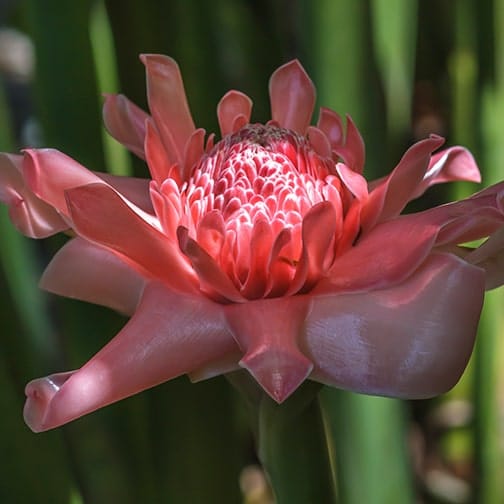
Ginger
Quick Access :
General information
General
Information :
Information :
Ginger has the ability to grow in a wide variety of land types and areas, however, is best produced when grown in an exceedingly warm, humid environment, at an elevation between 300 and 900m, and in well-drained soils at least 30 cm deep. A period of low rainfall prior to growing and well-distributed rainfall during growing are also essential for ginger to thrive well in the soil. Ginger is a very popular spice used worldwide; whether it be used to spice up meals, or as a medicine, the request for ginger all over the world has been consistent throughout history. Ginger could be used for a variety of food or medicine items such as vegetables, candy, soda, pickles, and alcoholic beverages.

Ginger has a very long history of use in different forms of traditional/alternative medicine. It has been used helping digestion, reducing nausea and helping to fight the flu and common cold.
Product benefits
Ginger
Benefits :
- Containing gingerol, a substance with powerful medicinal properties
- Treating many forms of nausea, especially morning sickness
- Reducing muscle pain and soreness
- Having anti-inflammatory effects help with osteoarthritis
- Drastically lowering blood sugars
- Improving heart disease risk factors
- To help treating chronic indigestion
- Reducing menstrual pain by the help of ginger powder
- Lowered cholesterol levels
- Containing a substance that may help prevent cancer
- Improving brain function
- Protecting against Alzheimer’s disease
- Helped to fight infections
- Speeding up emptying of the stomach
- Protecting against age-related damage to the brain
How to Harvest
How To
Harvest :
The size of the ginger seed, named as rhizome, is necessary to the production of ginger. The larger the rhizome piece, the faster ginger will be produced and therefore the faster it will be sold onto the market. Prior to planting the seed rhizomes, farmers are needed to treat the seeds to prevent seed-borne pathogens and pests, rhizome rot and other seed-borne diseases. There are various ways farmers do seed treatment.


Planting the irrigated ginger is commonly drained in the months between March and June as those months’ account for the commencing of the monsoon, or rainy and season. Once the planting stage is done, farmers go on to mulch the crop to “conserve moisture and check weed growth”, in addition as check surface run-off to conserve soil. Mulching is completed by applying mulch to the plant beds directly after planting. So after mulching comes hulling break the firmness of the soil from rain, and conserve soil moisture.
Farmers must irrigate their ginger crops every two weeks at the least between September and November (when the monsoon is over) to ensure maximum yield and high-quality product. The final farming stage for ginger is the harvesting stage and for items such as vegetable, soda, and candy, harvesting should be done between four and five months of planting, whereas when the rhizome is planted for products such as dried ginger or ginger oil, harvesting must be done eight to ten months after planting.

Packaging
Packaging :
We can provide ginger or ginger powder in each quantity that our clients want, there is no limitation regarding weight, destination and packaging type.

